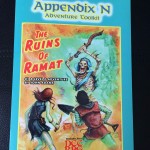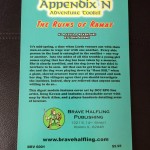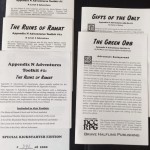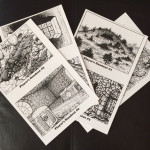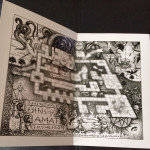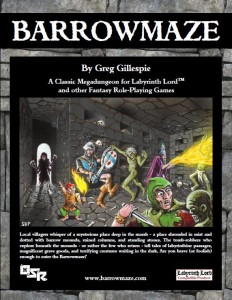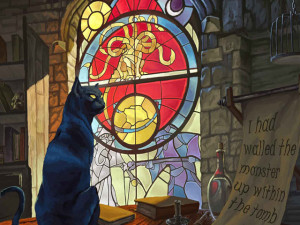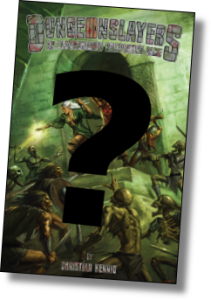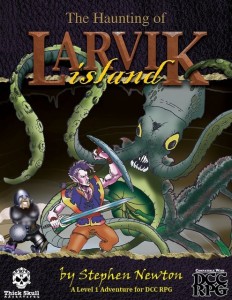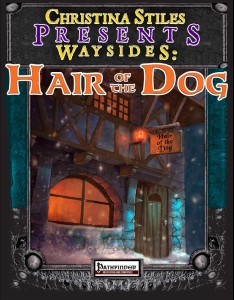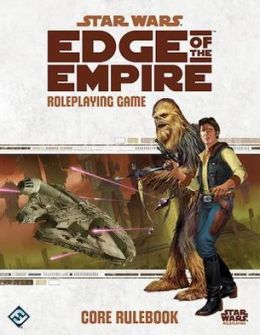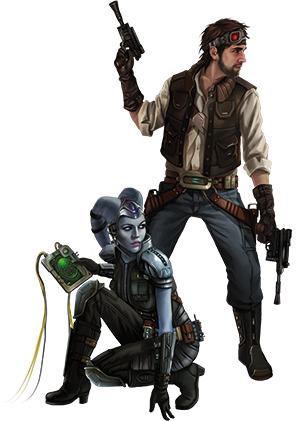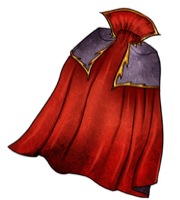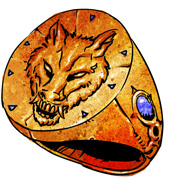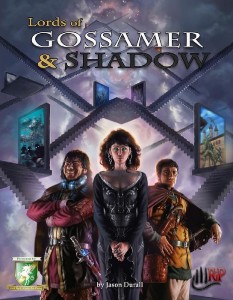 If you are a follower of me on my blog at www.thepathfinderchronicles.com you may wonder what has overcome me this week. I have blogged about very little apart from creating some non player characters for a new game that is to be released (you can actually get the PDF now) to non-Kickstarter backers early in December called the Lords of Gossamer and Shadow written by Jason Durall and published by Rite Publishing. What is it about this game that I am so wound up about? The first thing that caught my eye about this game is it is a random free zone, or a diceless system if you want!
If you are a follower of me on my blog at www.thepathfinderchronicles.com you may wonder what has overcome me this week. I have blogged about very little apart from creating some non player characters for a new game that is to be released (you can actually get the PDF now) to non-Kickstarter backers early in December called the Lords of Gossamer and Shadow written by Jason Durall and published by Rite Publishing. What is it about this game that I am so wound up about? The first thing that caught my eye about this game is it is a random free zone, or a diceless system if you want!
Back in the good old 1990’s a system was released that was revolutionary to the RPG industry in that it was a diceless system. The system was Erick Wujcik’s Amber and it caused quite a stir. Many gamers around me at the time turned their back on the game because they did not think it was roleplaying. It was collaborative storytelling at best and that was a bad, bad thing – apparently. I have always been someone that is fascinated with new things in RPG’s but with all the gamers around me having no interest I had to pass it by so never quite got my teeth into it.
I am not really sure what happened with Amber in the long run but I do know that the people who gave it a go, loved it. I am always on the lookout for a copy and they never show up. Then one day I am skipping through my Google Plus feed and an interesting image popped up that caught my eye. It is located at the bottom of the Rite Publishing’s page for the game, right down the bottom. It depicts a group of horned monsters in shadow who have just broken down a door and are attacking a group of people (who are all in the light). It is a fantastic little image and I went and investigated it a little bit more.
Turns out that the game was the Lords of Gossamer and Shadow which had been shared around a bit on the feed with the cover of the book as the image. It had interested me, just not enough to click on it by that stage. What I found is this game was considered by some the “spiritual successor” to Amber. In fact it used Amber’s diceless system but applied a new setting to the game. I downloaded the preview of the game and set to reading it.
Diceless got me in to the system and in reality it is not a scary mechanic by any stretch of the imagination. Sure, it takes a lot of the random nature away from the game but you still have stats, powers and the like. There is a set of cohesive rules that work to create the game and guide the GM to provide a fair and equitable game. There are rules for player death, damage, fighting and the like. So what is different? Well largely the decisions of the players are dictated by two things, attributes and tactics. Put two characters in a room where no tactics can come into play and have a contest of attributes, the highest attribute wins every time. However, if the lower attribute character can create an advantage for themselves through their actions it may be a different thing altogether.
The focus is really on roleplaying in the game. The building of the story and having the GM as an arbiter of the final outcomes from the players actions. A lot of the people I have spoken to believe that it is all by GM caveat but I would argue this after having read the full rules (as a Kickstarter backer I have early access to the rules PDF) that this is not the case. There are rules that are clear on what needs to be done. This game is going to be as much a revolution to me as it was the first time I played FATE or Dungeon World.
While the system has me really interested, it is the setting that has me completely enamored. I have played systems before that promise you can build any type of game or world you want but this game offers a setting where anything, anything can be encountered. The premise is you play a powerful character (in essence they would be considered a God on Earth) that has access to a Grand Stair which has doors attached to it. Through each of these doors is a connected reality that you walk into. That connected reality could in essence be any type of world or space possible, as long as it has a door to travel through. So in essence, I suppose the only reality it can’t represent is one without a door.
This means you can play any style of character from a D&D Dragonborn to a creature from the Hellraiser books because the travellers of the Grand Stair all come from one of these realities where they develop the ability to, or find a key to open the door onto the Grand Stair and then everything changes for them.
So the reason I am truly excited about this? (Sorry but this needs to be capitalized) BIGGEST SANDBOX EVER! A lot of the feel for the game has the characters utilizing weapons of a fantasy type, and there is a reason for this, but they will travel through sci-fi, horror, fantasy and all kinds of genres if you want them to. They will have no idea until they step through the door (not strictly true, there is a power that helps) until they turn the handle.
If you are a fan of Amber, or you want to investigate a new game that has an unbelievable number of narrative possibilities I suggest you keep an eye out for this. I am lead to believe that you can get the PDF from the web page at Rite Publishing so if you can’t wait, check it out! Keep rolling.
Mark Knights is 39 year old guy living in a small rural town called Elliott in Tasmania, Australia. I have been role playing since I was 11 years old playing the original versions of Dungeons and Dragons, MERP, Elric, Dragon Warriors and the like amongst other genre games. I played D&D 2nd Edition through the 90′s but I ran Earthdawn for my fantasy setting and loved it as a GM. When 3rd Edition came out for D&D I tried it but found it too heavy on rules. I ignored the 3.5 edition of DnD in favour of Earthdawn (big mistake) as I thought it was just a money spinner. When 4th Edition DnD came on my players and I gave it a red hot go but hated what it had dumbed the game down to be. On a trip to Melbourne to buy some 4E stuff from a hobby store an old mate of mine pointed me at Pathfinder and in a Fantasy setting I have never looked back.

